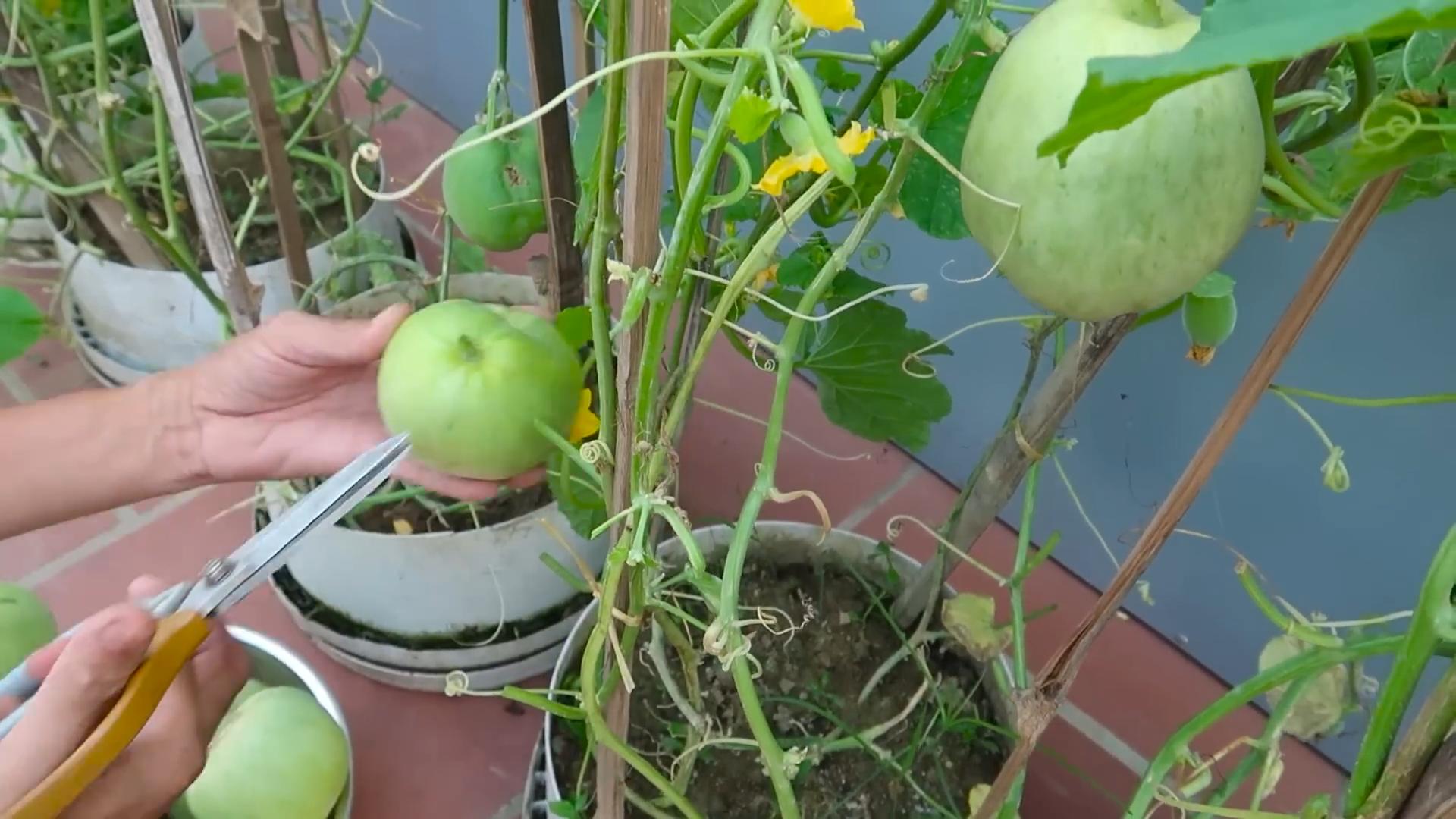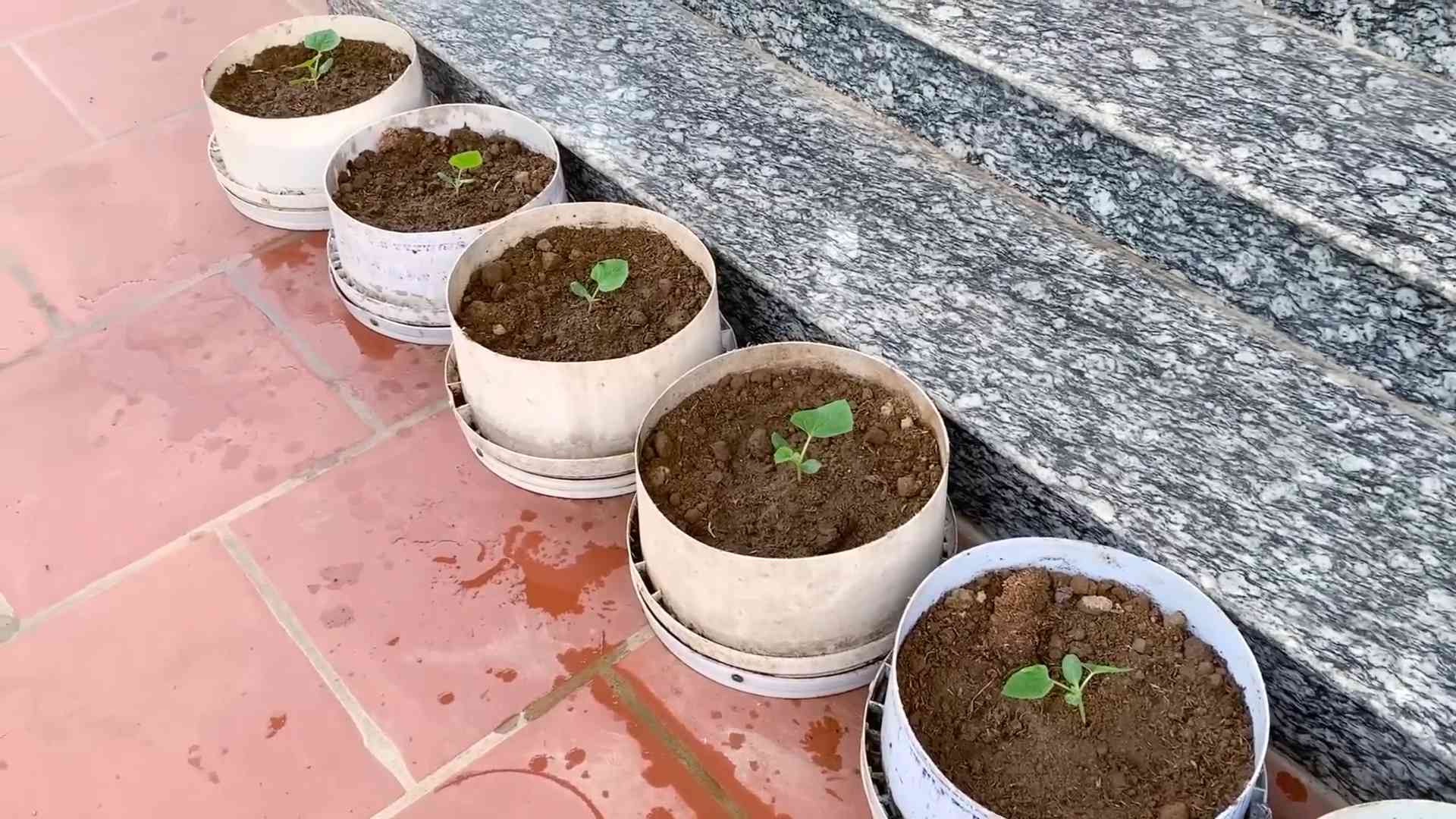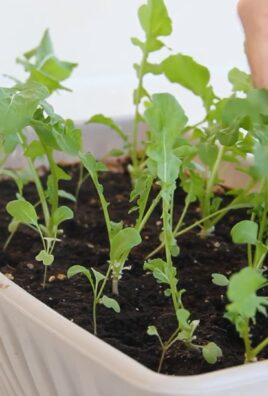Grow Sweet Melons Home, and transform your backyard into a personal oasis of deliciousness! Have you ever dreamed of biting into a perfectly ripe, juicy melon, bursting with flavor, knowing you nurtured it from seed to fruit? Well, stop dreaming and start doing! This article is your ultimate guide to unlocking the secrets of cultivating these summertime treats right in your own garden.
Melons have a rich history, dating back to ancient civilizations in Africa and Asia. For centuries, they’ve been prized for their refreshing taste and nutritional benefits, gracing the tables of royalty and commoners alike. Today, the joy of growing your own food is experiencing a resurgence, and what could be more rewarding than harvesting your very own sweet melons?
Let’s face it, store-bought melons can sometimes be a gamble. They might lack flavor, be overly expensive, or even be picked before they’re truly ripe. But with a few simple tricks and DIY hacks, you can grow sweet melons home that are far superior in taste and quality. I’m going to share easy-to-follow steps, from choosing the right varieties to providing the perfect growing conditions, ensuring you’ll be enjoying homegrown melons all season long. Get ready to roll up your sleeves and embark on a rewarding gardening adventure!

Growing Sweet Melons at Home: A DIY Guide to Juicy Success
Hey there, fellow gardening enthusiasts! I’m so excited to share my tried-and-true method for growing incredibly sweet and juicy melons right in your own backyard. Forget those bland, store-bought melons – with a little know-how and some elbow grease, you can be enjoying homegrown goodness all summer long. This guide is packed with everything I’ve learned over the years, so let’s get started!
Choosing the Right Melon Variety
Before we even think about planting, it’s crucial to pick the right melon variety for your climate and space. Some melons thrive in hot, dry conditions, while others prefer a bit more humidity. Also, consider the size of the melon – some varieties are massive and need a lot of room to sprawl, while others are more compact.
Here’s a quick rundown of some popular and reliable melon varieties:
* Cantaloupe: A classic choice, cantaloupes are known for their sweet, orange flesh and netted rind. They generally need a long growing season (75-90 days). Look for varieties like ‘Athena’, ‘Hales Best Jumbo’, or ‘Ambrosia’.
* Watermelon: The quintessential summer fruit! Watermelons come in various sizes and colors, from the classic red-fleshed ‘Crimson Sweet’ to the smaller, yellow-fleshed ‘Yellow Doll’. Growing watermelons requires plenty of space and sunshine (80-100 days).
* Honeydew: With its smooth, pale green rind and sweet, light green flesh, honeydew is a refreshing treat. It needs a warm climate and a long growing season (65-80 days). ‘Honeycrisp’ and ‘Temptation’ are good choices.
* Galia Melon: A cross between a cantaloupe and a honeydew, Galia melons have a distinctive spicy-sweet flavor and a netted, yellow rind. They are relatively easy to grow and mature in about 70-80 days.
* Personal-Sized Melons: If you’re short on space, consider growing personal-sized melons like ‘Sugar Baby’ watermelon or ‘Minnesota Midget’ cantaloupe. These smaller varieties are perfect for container gardening or small gardens.
Preparing the Soil and Planting
Melons are heavy feeders, meaning they need nutrient-rich soil to thrive. Proper soil preparation is key to a successful harvest.
1. Choose a Sunny Location: Melons need at least 6-8 hours of direct sunlight per day. Pick a spot in your garden that gets plenty of sunshine.
2. Amend the Soil: Melons prefer well-drained soil with a pH between 6.0 and 6.8. Before planting, amend the soil with plenty of compost or well-rotted manure. This will improve drainage, add nutrients, and help retain moisture. I usually add a generous layer (about 4-6 inches) of compost and work it into the top 12 inches of soil.
3. Create Mounds or Rows: Melons grow best on slightly raised mounds or rows. This helps with drainage and warms the soil more quickly. Create mounds that are about 12 inches high and 2-3 feet wide. If you’re planting in rows, space the rows about 4-6 feet apart.
4. Start Seeds Indoors (Optional): To get a head start on the growing season, you can start melon seeds indoors about 4-6 weeks before the last expected frost. Sow the seeds in peat pots or biodegradable containers filled with seed-starting mix. Keep the soil moist and warm (around 80-85°F) until the seeds germinate.
5. Direct Sow Seeds (If Weather Permits): If you live in a warm climate with a long growing season, you can direct sow melon seeds directly into the garden after the last frost. Make sure the soil temperature is at least 70°F. Plant the seeds about 1 inch deep and space them according to the variety’s recommendations.
6. Transplant Seedlings (If Starting Indoors): Once the seedlings have developed a few sets of true leaves and the weather has warmed up, you can transplant them into the garden. Harden off the seedlings by gradually exposing them to outdoor conditions for a week before transplanting. Plant the seedlings at the same depth they were growing in the pots, and space them according to the variety’s recommendations.
Watering and Fertilizing
Consistent watering and fertilization are essential for healthy melon growth and sweet, juicy fruits.
1. Water Deeply and Regularly: Melons need consistent moisture, especially during fruit development. Water deeply and regularly, aiming for about 1-2 inches of water per week. Avoid overhead watering, as this can lead to fungal diseases. Drip irrigation or soaker hoses are ideal for delivering water directly to the roots.
2. Fertilize Regularly: Melons are heavy feeders and need regular fertilization to produce abundant, sweet fruits. Use a balanced fertilizer (e.g., 10-10-10) at planting time, and then side-dress with a nitrogen-rich fertilizer (e.g., ammonium nitrate) when the vines start to run. Once the fruits begin to develop, switch to a fertilizer that is higher in phosphorus and potassium (e.g., 5-10-10) to promote fruit sweetness and size. I like to use a liquid seaweed fertilizer every few weeks as well, as it provides micronutrients and helps boost plant health.
3. Mulch Around the Plants: Mulching around the melon plants helps retain moisture, suppress weeds, and regulate soil temperature. Use organic mulches like straw, hay, or wood chips.
Pruning and Training
While not always necessary, pruning and training melon vines can improve air circulation, reduce disease, and encourage larger, sweeter fruits.
1. Prune the Vines (Optional): If your melon vines are becoming too crowded, you can prune them to improve air circulation and sunlight penetration. Remove any dead, diseased, or yellowing leaves. You can also prune the lateral vines (the ones that grow off the main vine) to encourage the plant to focus its energy on fruit production.
2. Train the Vines (Optional): You can train melon vines to grow up a trellis or fence to save space and improve air circulation. Use soft ties or twine to attach the vines to the support structure. Be careful not to damage the vines when training them.
3. Elevate the Fruits (Optional): To prevent the fruits from rotting on the ground, you can elevate them by placing them on a bed of straw or a piece of wood. This will also help them ripen more evenly.
Pest and Disease Control
Melons are susceptible to various pests and diseases, but with proper care and preventative measures, you can minimize problems.
1. Common Pests:
* Squash Bugs: These pests can suck the sap from melon leaves and stems, causing them to wilt and die. Handpick the bugs and their eggs (which are usually laid on the undersides of leaves) or use insecticidal soap.
* Cucumber Beetles: These beetles can transmit bacterial wilt and other diseases. Use row covers to protect young plants or apply neem oil.
* Aphids: These tiny insects can suck the sap from melon leaves, causing them to curl and distort. Spray them with insecticidal soap or release beneficial insects like ladybugs.
* Vine Borers: These pests bore into the stems of melon plants, causing them to wilt and die. Wrap the base of the stems with aluminum foil or netting to prevent the moths from laying their eggs.
2. Common Diseases:
* Powdery Mildew: This fungal disease causes a white, powdery coating on the leaves. Improve air circulation by pruning the vines and avoid overhead watering. Apply a fungicide if necessary.
* Downy Mildew: This fungal disease causes yellow spots on the upper surface of the leaves and a grayish-purple fuzz on the underside. Improve air circulation and avoid overhead watering. Apply a fungicide if necessary.
* Fusarium Wilt: This soilborne fungal disease causes the plants to wilt and die. Plant resistant varieties and practice crop rotation.
* Anthracnose: This fungal disease causes dark, sunken spots on the leaves and fruits. Avoid overhead watering and apply a fungicide if necessary.
3. Preventative Measures:
* Choose Disease-Resistant Varieties: When selecting melon varieties, look for those that are resistant to common diseases in your area.
* Practice Crop Rotation: Avoid planting melons in the same spot year after year. Rotate them with other crops to prevent the buildup of soilborne diseases.
* Maintain Good Air Circulation: Prune the vines to improve air circulation and prevent fungal diseases.
* Water Properly: Avoid overhead watering, as this can create a humid environment that favors fungal diseases.
* Monitor Plants Regularly: Check your melon plants regularly for signs of pests or diseases. The earlier you catch a problem,

Conclusion
So, there you have it! Growing sweet melons at home, while it might seem like a challenge reserved for seasoned gardeners, is absolutely achievable with a little know-how and the right approach. This DIY trick, focusing on [specific aspect of the trick detailed in the main article, e.g., soil preparation, pollination techniques, or pest control], is a game-changer. It’s not just about getting melons; it’s about getting *sweet* melons, bursting with flavor and the satisfaction of knowing you nurtured them from seed to table.
Why is this a must-try? Because it empowers you to take control of your food source, reduce your reliance on store-bought produce (which can often lack the intense sweetness we crave), and experience the pure joy of harvesting something you’ve grown yourself. Imagine biting into a juicy, sun-ripened melon, knowing that you played a direct role in its deliciousness. That’s an experience worth pursuing.
But don’t stop there! Experimentation is key to unlocking your green thumb potential. Consider these variations:
* **Different Melon Varieties:** Once you’ve mastered the basics with a classic cantaloupe or watermelon, branch out and try growing honeydew, Galia, or even some of the more exotic melon varieties. Each has its unique flavor profile and growing requirements, offering a continuous learning experience.
* **Companion Planting:** Explore the benefits of companion planting. Marigolds can deter pests, while basil can improve the overall health of your melon plants. Research which plants thrive alongside melons in your specific climate.
* **Vertical Growing:** If space is limited, consider training your melon vines to grow vertically on a trellis or fence. This not only saves space but also improves air circulation, reducing the risk of fungal diseases.
* **Soil Amendments:** While the DIY trick focuses on [mention the specific aspect again], don’t neglect the importance of overall soil health. Regularly amend your soil with compost or other organic matter to provide your melon plants with the nutrients they need to thrive.
Ultimately, the best way to learn is by doing. Don’t be afraid to get your hands dirty, make mistakes, and learn from them. Growing sweet melons at home is a journey, not a destination. Embrace the process, enjoy the challenges, and savor the rewards.
We’re confident that this DIY trick will significantly improve your chances of harvesting a bountiful crop of sweet, delicious melons. So, go ahead, give it a try! And most importantly, share your experience with us. We’d love to hear about your successes, your challenges, and any variations you’ve discovered along the way. Post pictures of your melons, share your tips, and let’s create a community of home melon growers! Let us know if you were able to grow sweet melons at home.
Frequently Asked Questions (FAQ)
Q: What if I don’t have a lot of space for a traditional garden?
A: Don’t worry! Melons can be successfully grown in containers, especially smaller varieties like personal watermelons or cantaloupes. Choose a large container (at least 20 gallons) with good drainage. Vertical gardening, as mentioned earlier, is also an excellent option for maximizing space. Use a sturdy trellis or fence to support the vines. Make sure your container is in a spot that receives at least 6-8 hours of direct sunlight per day.
Q: How do I know when my melon is ripe?
A: Ripeness indicators vary depending on the melon variety. For cantaloupes, look for a prominent netting pattern on the skin and a sweet aroma. The stem should also easily slip from the vine with gentle pressure. Watermelons are trickier. Look for a dull, rather than shiny, rind. The underside of the melon (where it rests on the ground) should be a creamy yellow color. You can also thump the melon; a ripe watermelon will sound hollow. Honeydew melons should have a slightly waxy feel and a pale yellow color. Research the specific ripeness indicators for the variety you are growing.
Q: My melon plants are flowering, but I’m not getting any fruit. What could be the problem?
A: This is a common issue and often related to pollination. Melons require pollination to set fruit. If you’re not seeing bees or other pollinators in your garden, you may need to hand-pollinate. Use a small paintbrush to transfer pollen from the male flowers (those with a long, thin stem) to the female flowers (those with a small, immature melon at the base). Do this in the morning, when the pollen is most viable. Also, avoid using pesticides that could harm beneficial insects.
Q: My melon plants are getting attacked by pests. What can I do?
A: Prevention is key. Start by choosing disease-resistant varieties and maintaining healthy soil. Regularly inspect your plants for signs of pests, such as aphids, squash bugs, or cucumber beetles. Hand-picking pests is often effective for small infestations. You can also use insecticidal soap or neem oil, following the instructions carefully. Companion planting with marigolds or nasturtiums can also help deter pests. Row covers can protect young plants from pests early in the season.
Q: How often should I water my melon plants?
A: Melons need consistent moisture, especially during fruit development. Water deeply and regularly, aiming for about 1-2 inches of water per week. Avoid overhead watering, which can lead to fungal diseases. Drip irrigation is an excellent option for delivering water directly to the roots. Reduce watering as the melons ripen to concentrate the sugars and improve flavor.
Q: What kind of fertilizer should I use for my melon plants?
A: Melons are heavy feeders and benefit from regular fertilization. Start with a balanced fertilizer (e.g., 10-10-10) at planting time. Once the plants start to flower, switch to a fertilizer that is higher in phosphorus and potassium to promote fruit development. You can also supplement with compost tea or other organic fertilizers. Avoid over-fertilizing, which can lead to excessive vine growth and reduced fruit production.
Q: Can I save seeds from my melons to plant next year?
A: Yes, you can save seeds from open-pollinated melon varieties. Hybrid varieties may not produce true-to-type offspring. To save seeds, scoop them out of a ripe melon and rinse them thoroughly to remove any pulp. Spread the seeds on a paper towel to dry completely. Store the dried seeds in an airtight container in a cool, dark place.
Q: How long does it take to grow a melon from seed?
A: The time it takes to grow a melon from seed varies depending on the variety and growing conditions. Generally, it takes about 70-90 days from planting to harvest. Start seeds indoors 4-6 weeks before the last expected frost. Transplant seedlings outdoors after the danger of frost has passed.
Q: What are some common diseases that affect melon plants?
A: Common diseases include powdery mildew, downy mildew, and fusarium wilt. Powdery mildew appears as a white, powdery coating on the leaves. Downy mildew causes yellow spots on the upper surface of the leaves and a gray, fuzzy growth on the underside. Fusarium wilt causes the plants to wilt and die. To prevent diseases, choose disease-resistant varieties, provide good air circulation, avoid overhead watering, and practice crop rotation.
Q: Is growing sweet melons at home really worth the effort?
A: Absolutely! While it requires some effort and attention, the reward of biting into a homegrown, perfectly ripe, and incredibly sweet melon is unmatched. Plus, you’ll have the satisfaction of knowing exactly where your food came from and how it was grown. It’s a rewarding and delicious experience that’s well worth the investment of time and energy.




Leave a Comment